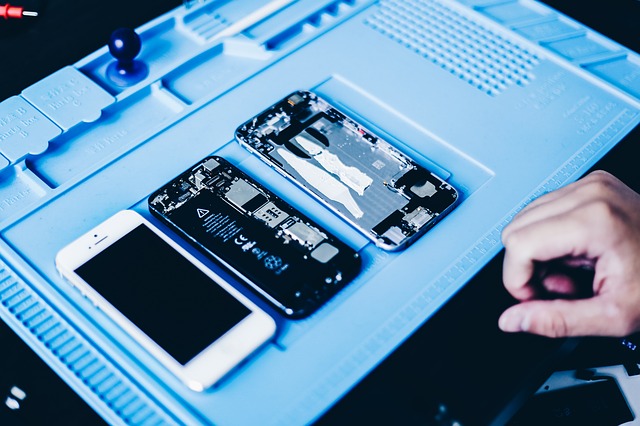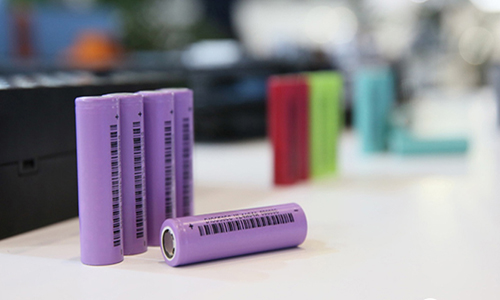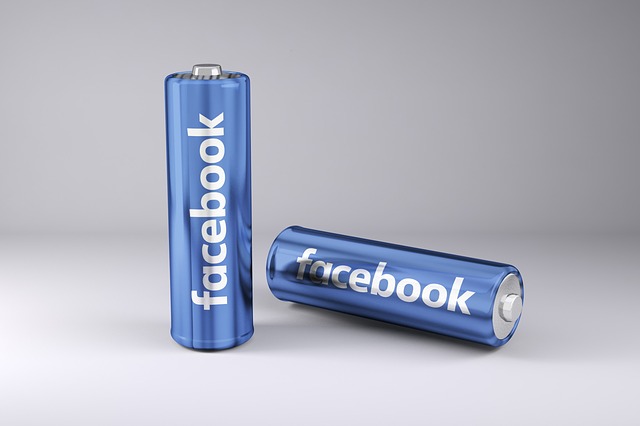18650 Battery Positive End Understanding
Jun 05, 2019 Pageview:2846
18650 batteries refer to the lithium-ionized rechargeable batteries which are currently used by most of the electronic devices. They are used to power devices like lasers, laptops, flashlights and even measurement tools. The voltage for these batteries is usually around 3.6 to 3.7v. However, they are considered fully charged at the voltage of 4.2v while they are found to be discharged at 3.3v. The lifespan of the battery can decrease significantly, owing to excessive discharging or overcharging.
Positive and negative 18650 battery terminals comparison
These lithium-ion batteries function via intercalation compounds. Crystalline structure layers the compounds. These layers enable the migration of lithium ions from between them. The ions move from the negative electrode to the positive electrode via the electrolyte when the battery discharges. Thus, the movement of electrons is in the opposite direction, powering the load. The current flow stops when the negative electrodes are used up. When the battery is charged, the ions make their way back from the positive to the negative electrode through the electrolyte and get embedded in the negative terminal until discharging commences.
The lithium-ionized batteries currently available in the market use lithium-based intercalation compounds for positive electrodes. lithium cobalt oxide is an example of such a compound as it offers more stability and safety compared to pure lithium, which is quite reactive. The negative electrode makes use of graphite.
Every time that the shifting of ions occurs, some of them react with the electrode and become a part of the compound. Thus, they no longer remain a part of the electrochemical reaction. Owing to this, the supply of free ions decreases, leading the battery life being diminished. Furthermore, charging cycles also cause the electrodes to expand volumetrically. Microscopic damage occurs owing to this, leading to a decrease in the ability of electrodes to embed the free ions. The number of recharge cycles is thus limited.
How to tell which 18650 battery end is positive
Differentiating between the negative and positive terminals of 18650 batteries might be difficult if you are not aware of what to look for. Let us make things easier for you.
The negative terminal or the bottom and the bottom of the 18650 batteries are a single piece. The positive terminal is the top cap which you can see pressed into the body. It is identified owing to the white and round insulator made from plastic that is present on it. The purpose of this insulator is protecting it from short circuits as you insert or remove the device from an enclosed space. Most chargers are equipped with reverse polarity safety that let you know that you have inserted the battery backwards.
How to reduce damage for 18650 battery positive end during charging
The positive and negative electrodes can be damaged owing to overcharging and discharging. The structure of negative carbon layer collapses due to excessive discharging. Owing to this, the lithium ions insert in the charging process. On the other hand, more lithium ions get embedded in the negative electrode, preventing their release owing to overcharging.
If the safety valve of the battery is opened, the chemical substances that leak into the battery react with air, which can cause a fire. Therefore, it is vital to charge the 18650 cells with utmost caution.
For one thing, it would be a good idea to get profound quality if chargers for the purpose. These increase the lifespan of your batteries and make sure that the positive end sustains minimal damage during charging.
Inexpensive chargers are not very accurate when it comes to sending out current. Thus, the battery is charged abnormally causing it to be damaged. Therefore, endeavor to get a reputable lithium-ion battery charger, one that would pay attention to quality since this will ensure a long lifespan of your battery.
High-quality chargers are also provided with four protections, including over-current protection, protection against short-circuit, and overvoltage. They also have battery reverse protection.
The overcharge protection comes into play when the charger overcharges the battery. At such time, it is essential that the charging state is terminated without delay so that the rise of internal pressure can be prevented.
The protection against discharge is vital to prevent damage to the positive end. When the detection-point of the overcharge voltage is higher than the voltage of the battery, the protection for over-discharge gets activated, leading to the discharge being stopped. The cell then remains on a standby mode till the issue is resolved.
In case the discharge current of the battery is too large or if a short circuit occurs, the over-current protection is activated to prevent further damage.
18660 batteries are quite high-performance. Their applications are more extensive, and thus, it is all the more important that you provide them with optimal care. You would not want to change the batteries of your electronic devices ever so often, and thus you need to ensure that the positive end of the cell remains protected from damage for a long time.
Paying attention to the cycles of charging and discharging can make things quite easier. Some other simple methods can be of help as well.
· Make sure that you switch off the device and disconnect it when you put it on a charge. This ensures that the current is able to drop without any hindrance in case of saturation. Excessive load on the battery hampers with the function of the charger.
· The charging should be done at a moderate temperature. Avoid freezing temperatures.
· You do not have to charge the lithium-ion batteries fully. You will find that a partial charge is more suitable for these batteries.
· Keep in mind that some chargers may give a false topping charge. This implies that the battery might not be fully charged even when it shows the signal of completed.
· If you think that the battery has gotten excessively warm, discontinue the charger at the earliest.
· Applying partial charge of about 40 to 50% to an empty battery is advisable before you store it.
- Prev Article: Lithium-Ion Battery Chemistry Analysis
- Next Article: 18650 Button Top Battery Introduction
Leave Message
Hottest Categories
-
Hottest Industry News
-
Latest Industry News












